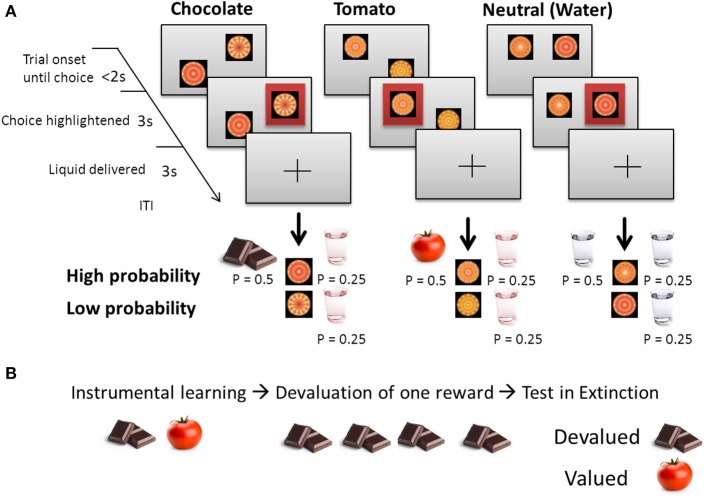Figure 1.
Selective devaluation paradigm according to Valentin et al. (2007). (A) Trial structure depicted for each condition during instrumental learning. On each trial subjects had to choose between two abstract stimuli, the chosen stimulus is then highlighted. The high-probability stimulus choice leads to a food outcome (chocolate or tomato) with a probability of p = 0.5 and to a common outcome (fruit tea) with p = 0.25. The low-probability stimulus choice never leads to food outcomes and in p = 0.25 to the common outcome. In the neutral condition, the high-probability stimulus choice leads to water with p = 0.75 and the low-probability stimulus choice to water with p = 0.25. (B) After instrumental training, subjects were invited to consume either chocolate (illustrated here) or tomato soup to satiety, resulting in a selective devaluation of the consumed outcome. Subjects then underwent the same “test” procedure in extinction (chocolate and tomato were no longer presented).

